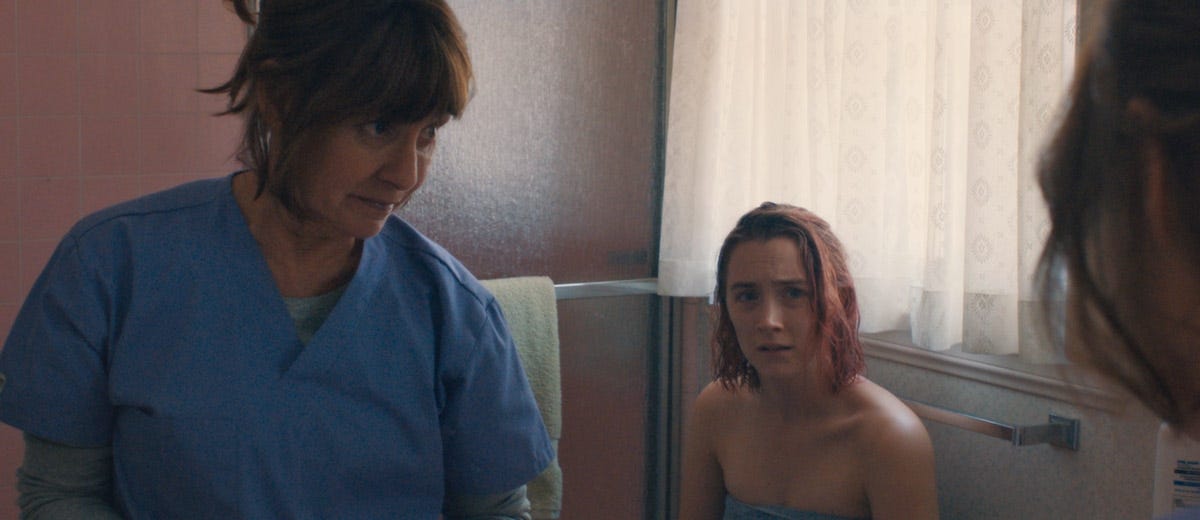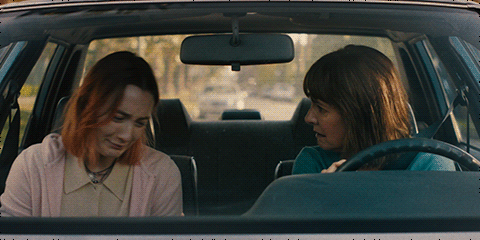Lady Bird: The best version of itself

Lady Bird is your standard coming of age, end of high school story that breaks free of the genre. It tackles class, sexuality, mental health and parenting in a clean 93 minutes.
Christine McPherson, aka “Lady Bird,” played by Saoirse Ronan, is a senior at a Catholic high school in Sacramento. Lady Bird does everything a senior in high school would do: fight with her parents, lose her virginity, smoke weed and eagerly anticipate leaving Sacramento.
Lady Bird focuses on the rocky relationship between Marion McPherson, Lady Bird’s mother, played by Laurie Metcalf, and Lady Bird that wavers between acrimony and civility. The opening scene of the movie, for instance, shows mother and daughter returning from a college tour road trip, crying over The Grapes of Wrath on tape. Within moments the two are fighting over Lady Bird’s desire to go to college at a liberal arts college in New York City.
“The way you work, the way you don’t work, you’re not even worth state tuition, Christine.” Lady Bird promptly opens the car door and rolls out — an absurdity that foreshadows what is to come between Lady Bird and her mother.
Lady Bird explores the intersection of love and criticism. It’s not easy to be a teenager (an experience I know), and it’s not easy to be a parent (an experience I don’t). Both Lady Bird and Marion seek something beyond themselves in their relationship. Both have an idea of what a proper daughter or mother looks like, but they’re just ideations. There is no perfect parent and there is no perfect daughter, and Lady Bird isn’t afraid to make that point.

Marion can be ruthlessly unsympathetic and Lady Bird can be intentionally flippant. Neither of these qualities are rare between mother and daughter, but for this combo it can be deadly. In one of the tensest scenes of the movie, Marion confronts Lady Bird about referring to their house as being “on the wrong sides of the track” and tells her, “You have no idea how much it costs to raise you.”
“Give me a number,” Lady Bird responds.
This dialogue is clever and quick, almost reminiscent of Gilmore Girls. However if Gilmore Girls lacked in credibility, Lady Bird feels grounded in the lived experience.
The unadulterated love between mother and daughter centers the movie. In one of the final scenes, we watch Marion refuse to speak to Lady Bird as she departs for an unnamed New York liberal arts school. As Marion drives away from the airport, regret washes over her face. What is obviously a cold move is followed up by the reveal of countless drafts of goodbye letters Marion wrote to Lady Bird. “She was afraid you would criticize the quality of her writing….Don’t tell her I gave you those.” Lady Bird’s father tells her on a phone call. There are gems of vulnerability between Lady Bird and her mother that are scattered throughout Lady Bird which bring tears as well as laughter.
Lady Bird also features a great high school story of failed relationship, asshole teenage boys, sensitive and symphathetic teenage boys, awkward sexual encounters, and good and bad friendships. All of these stories match the story of Lady Bird and her mother pound for pound. However, it is no surprise Greta Gerwig once thought of naming this film Mothers and Daughters. Lady Bird offers sympathy to the agony of parenting and adolescence. A final scene shows Lady Bird leaving a voicemail for her mother, fondly reminiscing on Sacramento, a city she at one point called “The Midwest of California.” Much like a hometown, a parent may not always be the New York City of your life, offering whatever you may wish for and asking for nothing in return. But unlike New York, a hometown is deeply personal, your history is not anonymous. And once you leave, it waits patiently to hear the second half of your story.

Thank you for reading.

/image%2F3352710%2F20190501%2Fob_db7d03_84.gif)


/https%3A%2F%2Fgame-tool.rocks%2Fimg%2Fh3.png)
